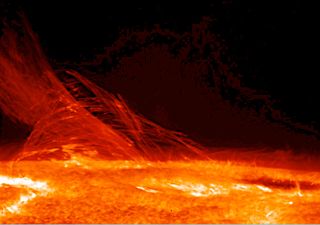Update 17 May 2023. All pages below the Contact page are new.
Chapter 4 - The Solar System
Contents
1 Planet names
2 The Latin word solarium
3 Distances
4 With energy comes heat
Terms and words used on this page include:
The Latin word solarium, is from sol the sun.
two elements – hydrogen - a gas and helium
Hydrogen and helium are the lightest elements in the periodic table. They exist as gases at room temperature and are the two most common elements in the universe, with hydrogen making up about 75% of all matter. source
plasma – that's a gas-like state
gravitational attraction
Other aspects include the make-up of the Sun
1 Planet names
- Jupiter was the king of the Roman gods.
- Saturn was the Roman god of agriculture.
- Uranus was named after an ancient Greek king of the gods.
- Neptune was the Roman god of the Sea.
- Venus was a Roman goddess whose represented love, beauty, prosperity and victory.
- In ancient Roman religion and myth, Mars was the god of war. Judo is a martial art.
- Terra Mater ("Mother Earth") was a goddess of the Earth. Terrestrial planets have a solid surface.
- Mercury in Roman religion, was the god of shopkeepers/merchants, travellers, thieves and tricksters.
- The Romans knew of seven bright objects in the sky: the Sun, the Moon, and the five brightest planets.
- They named them after their most important gods.
- Because Mercury was the fastest planet as it moved around the Sun, it was
- named after the Roman messenger god Mercury.

Neptune Take your pick! Mars
2 The Latin word solarium
- The Latin word solarium, is from sol the sun.
- It means of or relevant to the sun; coming from the sun.
- Examples -- the solar system; solar light; solar rays; solar influence.
- A solarium in every-day talk is any tanning unit that uses ultraviolet (UV) radiation to tan the skin.
3 Distances
- The sun is the largest and most massive object in the solar system.
- It is about 93 million miles (149.5 million km) from Earth.
- That distance is called an astronomical unit, or 1 AU, and is used to measure distances throughout the solar system.
- The sun's light and heat takes about eight minutes to reach us, which leads to another way to state the distance to the sun: 8 light-minutes.
4 With energy comes heat

- The Sun is mostly made of two elements – hydrogen - a gas and helium.
- The second lightest element (only hydrogen is lighter), helium is a colourless, odourless, and tasteless gas that becomes liquid at −268.9 °C (−452 °F)
- In chemistry and physics, an element is a substance that cannot be broken down into simpler components.
- They are constantly bashing together and breaking apart and these collisions create energy – a LOT of energy!
- With energy comes heat.
- The sun is made up of plasma – that's a gas-like state containing particles which have been blasted into pieces!
- At the core of the sun, gravitational attraction produces immense pressure and temperature,
- which can reach more than 27 million degrees Fahrenheit (15 million degrees Celsius).
- Hydrogen atoms are compressed and fuse together, creating helium.
It includes 
